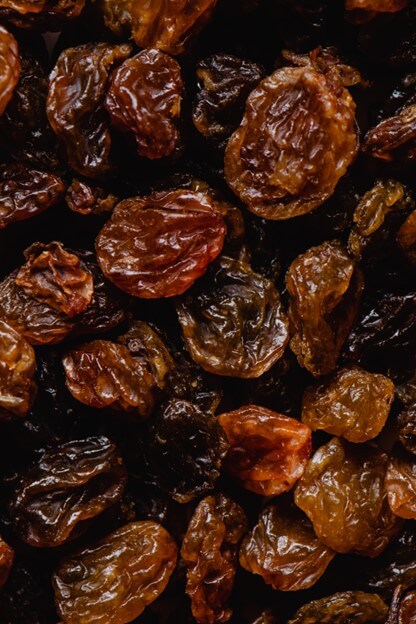We hope that you are enjoying our mini-retreats from Torri Shafer’s “Romancing the Soul”. Here’s our eighth selection, “Mindful Eating”, considering our relationship with food. Enjoy!
Mindful Eating
One of the most difficult senses to be mindful of is taste. Food has such complex cultural and emotional contexts that it is almost impossible to view it non-judgmentally. Although we need it to survive, the benefits of food go way beyond mere sustenance. We use food to celebrate, to comfort ourselves, to impress others, to define traditions, to enhance health and for pleasure.
In the pre-industrial world, most of a human’s time was spent in the procurement of food – whether through hunting or agriculture. But in the modern western society, few grow their own food. Modern processing and supermarkets have disconnected us from the origins of food as living things that support our life. We have also become separated from food’s critical importance to sustaining our lives and are now driven more by desire than hunger. Our relationship to food is increasingly shaped by corporate farming, social pressure, and the advertising industry.
Most of the time we barely taste our food. Usually, eating is intertwined with some sort of distraction. It could be eating while watching TV or mingling at a party or conversing with dinner companions or listening to music or reading a book. The socializing aspect of food is so ingrained that it feels very uncomfortable to simply eat. Even when we are alone, we have to conjure up some type of diversion – whether it is watching television, reading, scrolling or simply thinking about something else.
Our forks seem to move on their own volition. The moment the fork exits our mouth, it is swooping down for another helping and we tend to pile this bite on top of the one we already chewing. This “layering” of food, according to Jan Chozen Bays, is a hidden form of impatience. Eating one bite at a time, she says, “may lead you to watch the arising of impatience in other aspects of your life. Do you get impatient when you have to wait? We have to ask ourselves, why am I in such a rush to get through life, when I want to enjoy it so much?”
So, for this retreat, eat slowly, chewing at least 20 times and putting your fork down between each bite. Savor the experience happening in your mouth. Check for sweetness, bitterness, sourness and saltiness.
Once you swallow, pause for a minute to capture the finish. The finish reveals subtle characteristics of the flavor and may play a deciding role in whether you come back to a given food or not since the finish is what you’re left with after you finish eating. Study the finish as you eat. Has the food left a sweet, lingering, velvet touch or a bitter footprint? Time the finish to see how long foods linger invited or uninvited in the doorway of your mouth. Noticing the finish can slow down your eating.
Finally, try the “mmm” mantra. “Mmmm” is the “om” of mindful eating. This sound, like no other, celebrates the awareness of flavor. Some eaters appear to amplify their eating experience by making the “mmm” sound as they slow down to enjoy a particularly pleasurable taste. Try saying the “mmm” no matter what you are tasting and see if it changes the experience for you. Look at eating as an affirmation of your life and revere it as such.
The Raisin Meditation
Just slow down. Slow down your speech.
Slow down your breathing.
Slow down your eating,
and let this slower steadier pace perfume your mind.
~Doko
If we can eat with attention, we find that even the simplest foods provide a universe of sensory experience.
That is why eating the raisin is one of the first meditations taught in many mindfulness practices. Eating one raisin very slowly delivers wakefulness immediately. It not only brings us back to the incandescence of the present moment but to interconnectedness of all life. All of the effort that went into the formation of that single raisin can be appreciated—the tilling of the soil, the perfect weather conditions, the work raising the grapes, harvesting the fruit, drying it, packing and shipping it, displaying it in the store, buying it and finally having it sit in the palm of your hand.
First, take a raisin and hold it in the palm of your hand or between your finger and thumb. Take time to really focus on it; gazing with care and full attention—imagine that you’ve just dropped in from Mars and have never seen an object like this before in your life. Let your eyes explore every part of it, examining the highlights, the darker hollows, the folds and ridges, and any asymmetries or unique features.
Turn the raisin over between your fingers, exploring its texture. Maybe do this with your eyes closed if that enhances your sense of touch.
Hold the raisin beneath your nose. With each inhalation, take in any aroma that may arise. As you do this, notice if anything interesting is happening in your mouth or stomach.
Now slowly bring the raisin up to your lips, noticing how your hand and arm know exactly how and where to position it. Gently place the raisin in your mouth; without chewing. Notice how it immediately excites the saliva. Spend a few moments exploring it with your tongue.
When you are ready, prepare to chew the raisin, noticing how and where it needs to be for chewing. Then, very consciously, take one or two bites into it and notice what happens in the aftermath, experiencing any waves of taste that emanate from it as you continue chewing. Without swallowing yet, notice the bare sensations of taste and texture in your mouth and how these may change over time, moment by moment. Pay attention to any changes in the object itself. When you feel ready to swallow the raisin, see if you can first detect the intention to swallow as it comes up, so that even this is experienced consciously before you actually swallow the raisin.
Food for Thought Journaling
Imagine if we obsessed about what we loved about ourselves? ~Jacob B Smith
When our culture equates the senses with sinning, no sense is more guilty than taste and eating, particularly for women. In America, women are encouraged to be the providers but not the consumers of food. Eating food, especially enjoying food, is vilified through the unrealistic female body ideal, the obsession on restrictive dieting, and the media fascination with “dietary discipline.”
Michael Pollan, author of In Defense of Food: An Eater’s Manifesto, writes about a study done about the perception of food in America. The researchers showed the word “chocolate cake” to a group of Americans and recorded their word associations. “Guilt” was the top response. If that strikes you as unexceptional, consider the response of French eaters to the same prompt, “Celebration.”
For this journaling session, look at your own life and how food and guilt have played a part in it. Some of the questions you might ask yourself include:
- How was food and eating treated by your family when you were growing up? Your friends?
- What messages did you get from media and other sources about food?
- Has your relationship with food changed as you have aged? In what way?
- Do you think that food and feminism are related? In what way?
- How much time do you spend worrying about the opinions of other people? Do you feel preoccupied with the actions of others? Making assumptions? Passing judgments or making comparisons? How do you think this relates to your eating?
- What are five ways you can make eating more enjoyable in your life?
***
Torri’s book is available for purchase here.


Recent Comments